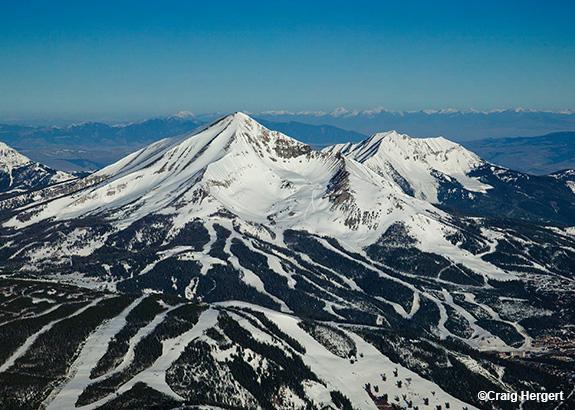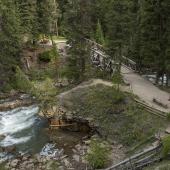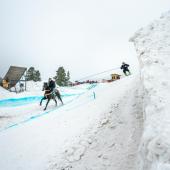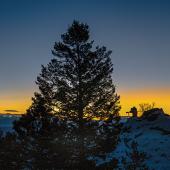Fire & Ice
The geology of Lone Peak.
Lone Mountain is the photogenic centerpiece of Big Sky. It is attention-grabbing in all seasons, but especially striking when snow-covered against a bluebird sky. The sharp peak and cone shape make some wonder if it is an old volcano. Although molten rock boiled beneath and pressure forced magma up through the mountain to the peak, it never erupted. The boiling magma spewed out laterally between layers of rock. Therefore, although Lone Mountain has many ingredients of a volcano, it cannot be classified as one since there was never an eruption.
However, Lone Mountain contains another geologic wonder: rock glaciers. A rock glacier is a pile of rock fragments that have shed off nearby slopes, mixed, and cemented together with ice while maintaining an internal year-round ice core. During the summer months, they don’t resemble their white ice glacier cousins that are typically thought of when dreaming of Alaska, the Alps, or Glacier National Park. They just look like a pile of rocks that seems to be oddly stuck to the side of a mountain.
The size and shape of the rock fragments are thought to contribute to the formation of a rock glacier. This outer layer of jumbled rock and air pockets form an insulating blanket that traps cold air and keeps the interior ice from melting each summer.
The Lone Peak Rock Glacier is one mile long and is under a majority of Big Sky Resort’s Lone Peak Tram. It starts at the base of the Big Couloir and extends into the Mr. K run. When riding up the tram, most of the rock glacier will be below or on the right. Skiers that are descending from the Big Couloir, ski over a large mound that the locals call “the Cueball.” This mound is a section of the rock glacier. Interestingly, the tram’s bottom shack is built on top of an active section of the rock glacier; engineers had to account for the rock glacier’s creeping downhill movement when designing and building the station. They drilled into the rock and ice to create the foundation, meaning that the building actually moves with the glacier—and you thought the ride was vertigo-inducing before!
Rock glaciers have been valued as an additional water reserve in a warming climate; however, there is also life in the ice. Geoscientists have studied the microbes in ice glaciers as well as in rock glaciers. They have determined that microbes are happier, thus more plentiful, in dirty ice, meaning the microbes can use rock debris for increased nutrients and as a source of energy.
Lone Peak is a stunning mountain that’s enjoyed by skiers, hikers, photographers, and ultra-runners. Now we can add rockhounds to that list.
Patti Albrecht owns Earth’s Treasures in Bozeman.












